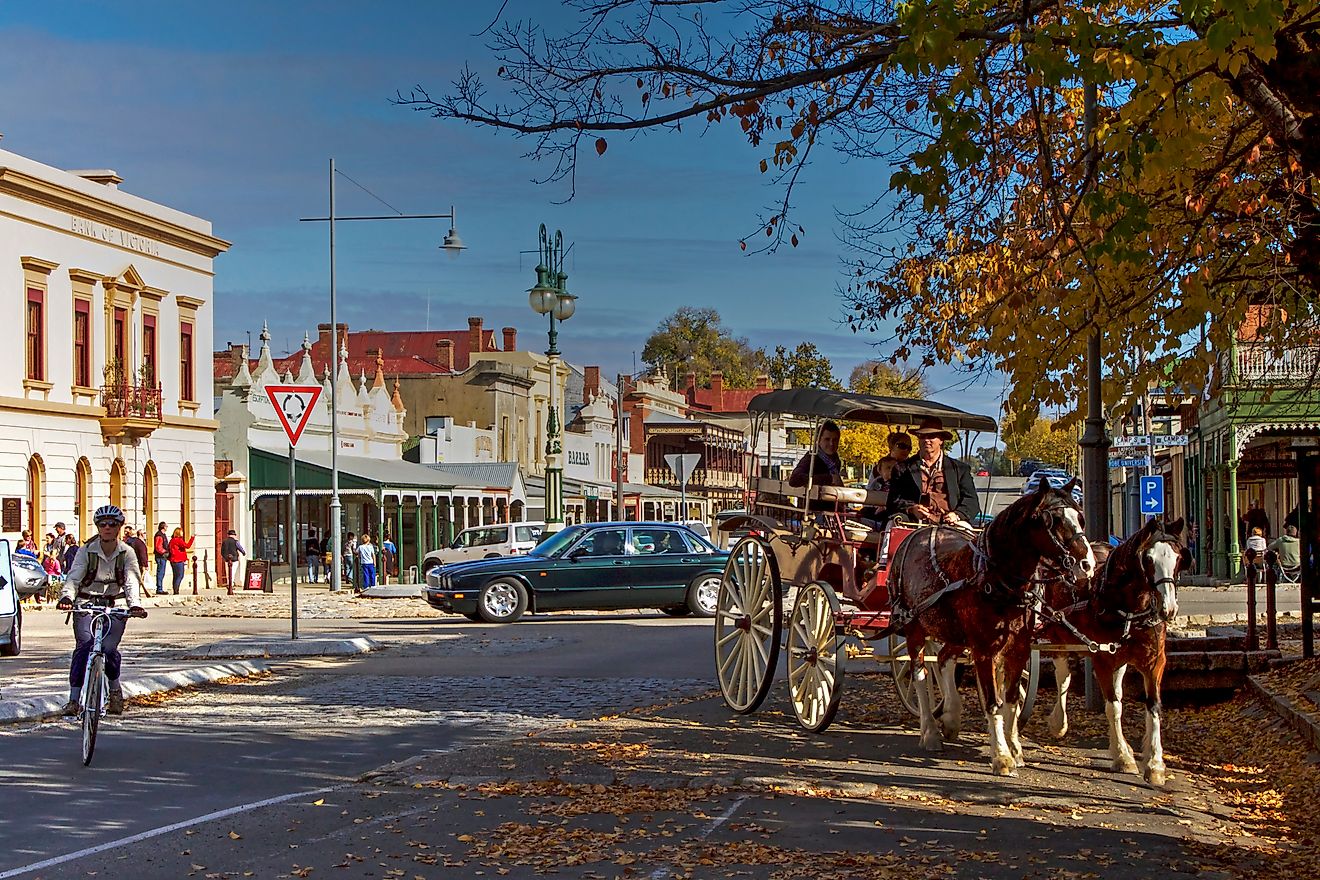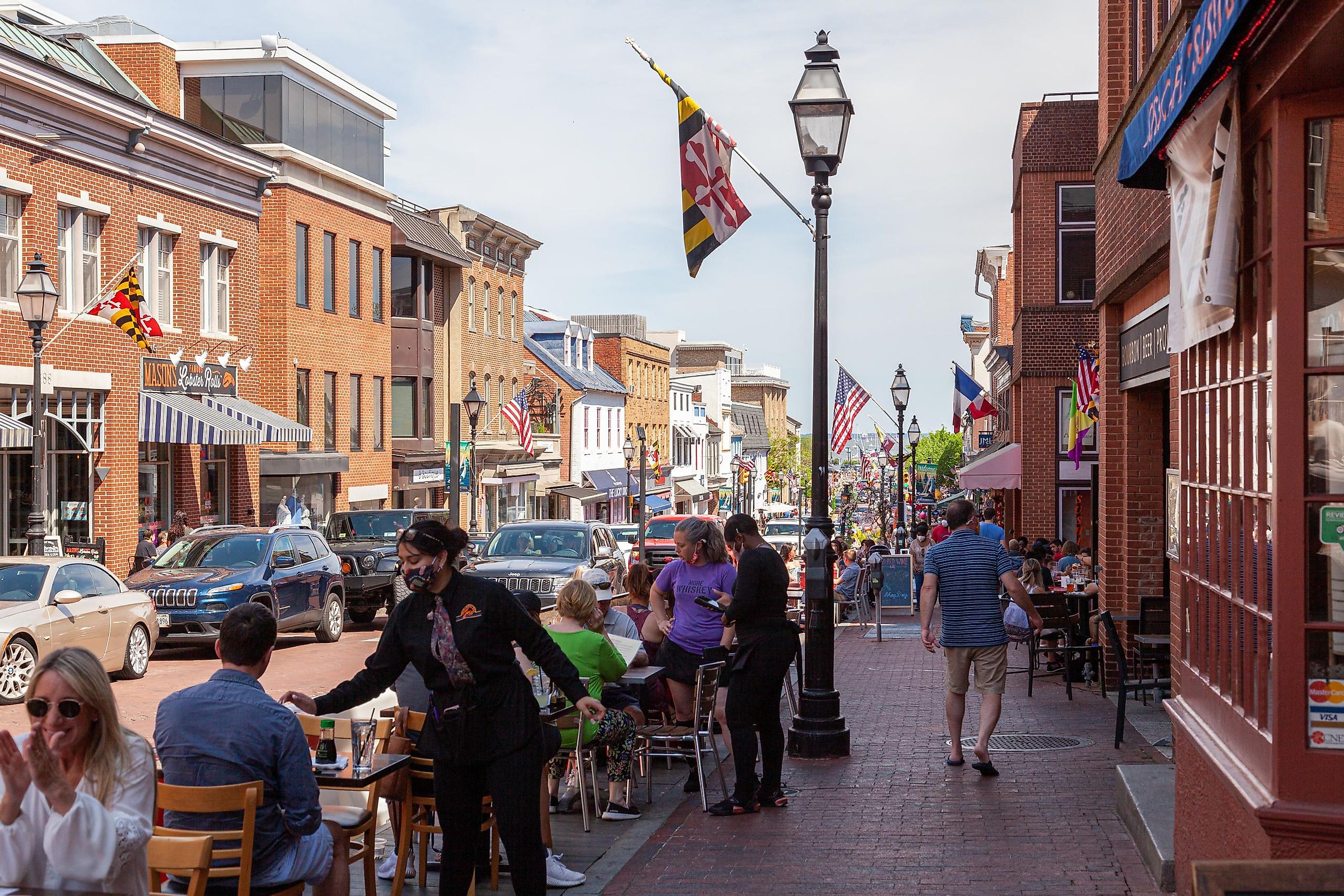
These Towns in the Atlantic Coast Have the Best Main Streets
Our ancestors might have known this coast as one wrought with shipwrecks, piracy, and hurricanes, but today, these towns and their streets are rewriting that reputation into one of daytime pleasantries. From the oldest continuously occupied European settlement of St. Augustine to the historic coastal town of Lewes, these spots offer visitors the opportunity to stroll along cobblestone streets, visit opulent mansions, and explore living history museums. Along the way, one can also encounter the undeniable appeal of local art, cuisine, and entertainment. So here are the best of the bunch, curated especially for those who need a break from the inland.
St. Augustine, Florida
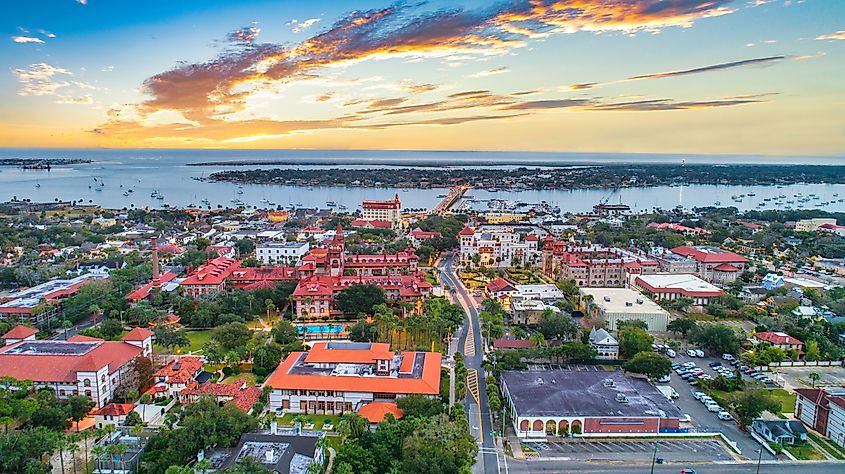
St. Augustine, the oldest continuously occupied European settlement in the United States, was founded in 1565 by Spanish explorers. The town's historic district, centered around St. George Street, is only a step away from the Atlantic Ocean. Visitors can explore unique shops, cafes, and restaurants while walking along the charming cobblestone streets. The Castillo de San Marcos, a 17th-century Spanish stone fortress, offers guided tours and incomparable views of the Matanzas River. Other notable attractions include the Lightner Museum, which houses a Victorian collection of art and artifacts, and the St. Augustine Distillery, where visitors can sample locally produced spirits. However, be careful with the time of year that you choose to visit, as flooding risks have gradually increased.
Beaufort, South Carolina
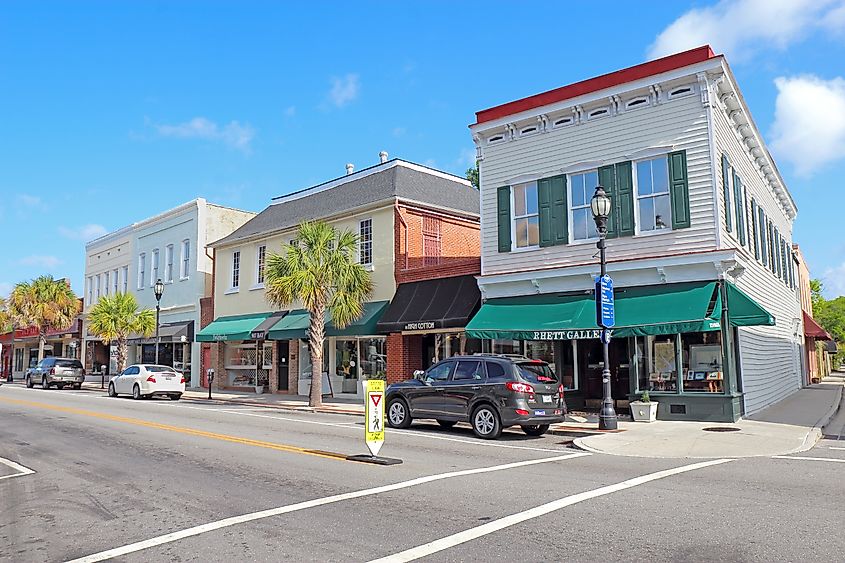
Founded in 1711, Beaufort is a terrific town on the Atlantic Coast known for its well-preserved antebellum architecture. Bay Street, the town's main street, runs parallel to the Beaufort River and is lined with beautiful historic homes, boutique shops, art galleries, and waterfront dining options. The nearby Henry C. Chambers Waterfront Park offers a serene setting for leisurely walks, picnics, and river views that guests are practically required to check out. The Beaufort History Museum showcases the town's past, featuring exhibits on Native American history, colonial times, and the Civil War.
Wilmington, North Carolina
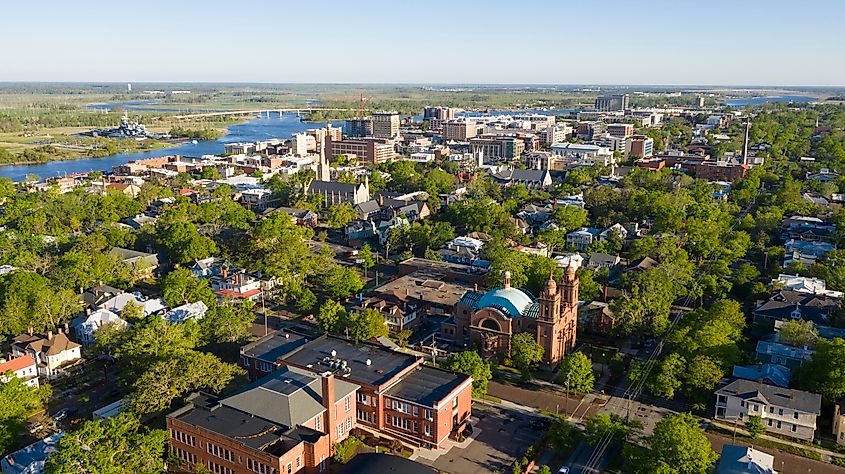
Wilmington, located on the Cape Fear River, is a vibrant coastal city with a rich history dating back to the early 18th century. Front Street, one of the city's busiest streets, possesses an ample choice in artistan traders, restaurants, and historic buildings. Similarly, the Riverwalk that runs parallel to Front Street and along the Cape Fear River is crammed with interesting sights, sounds, and human specimens. Furthermore, the nearby USS North Carolina Battleship Memorial, a restored WWII-era battleship, offers self-guided tours that provide insight into life aboard the vessel during the war. Thalian Hall, a historic theater that opened in 1858, continues to showcase a variety of performing arts, including theater, dance, and music.
Annapolis, Maryland
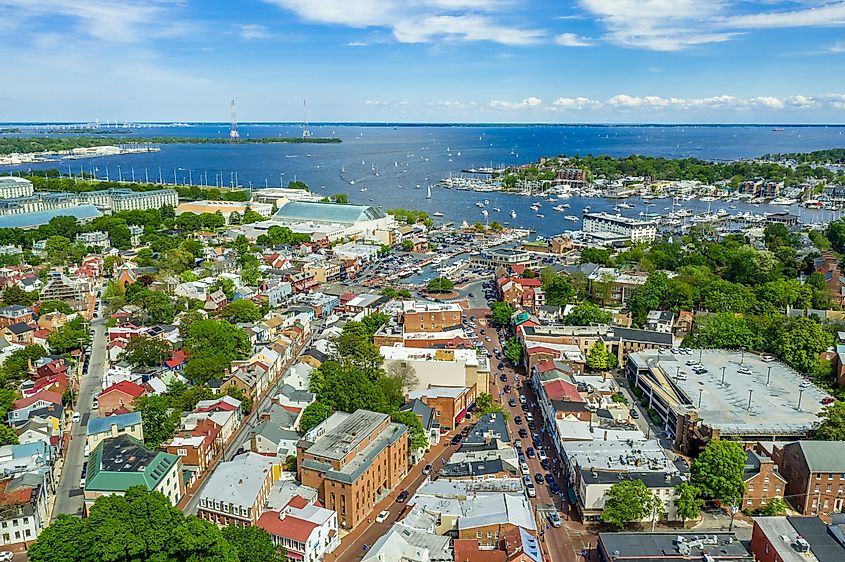
Annapolis, Maryland's capital city, stands on a foundation of colonial activity and legend. The town's main street, lined with cobblestone streets and 18th-century buildings, is popular for those looking to spend a day transported to a quieter time in U.S. history. For example, the Maryland State House, the oldest U.S. state capitol in continuous legislative use, offers guided tours that highlight its creation in 1779 and use by the Continental Congress. Annapolis is also home to the U.S. Naval Academy, where visitors can take guided tours of the campus and explore the Naval Academy Museum, which showcases the institution's heritage and contributions to American history. It is an extremely selective school, meaning that the students who frequent the town will always have something interesting to say should you wander into them.
Newport, Rhode Island

Newport is a historic seaside city known for its opulent Gilded Age mansions and vibrant sailing culture. Thames Street, the city's main thoroughfare, runs parallel to the waterfront and has been frequented by socialites and economic barons since roughly 1639, when the locale was founded. The famous Cliff Walk, a 3.5-mile coastal trail, provides breathtaking views of the Atlantic Ocean and the city's historic mansions. Visitors can tour several of these mansions, such as The Breakers and Marble House, which have been transformed into museums, offering a glimpse into the lavish lifestyles of America's wealthiest families during the late 19th and early 20th centuries.
Portsmouth, New Hampshire
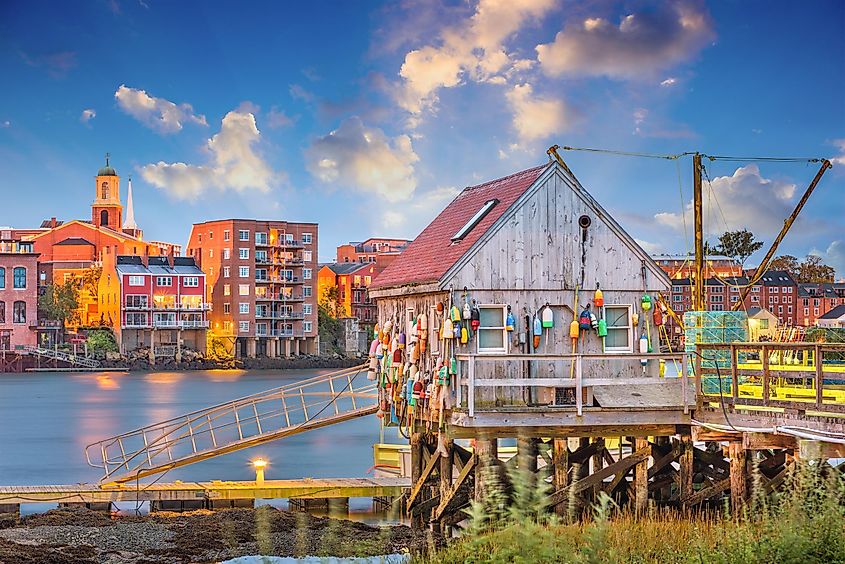
Portsmouth, a historic seaport on the Piscataqua River, boasts a vibrant downtown centered around Market Square. This bustling area features preserved 17th and 18th-century buildings housing local shops, alongside considerately-placed benches, in the shade of trees, and fountains. Strawbery Banke Museum, a living history museum, recreates the daily lives of early Portsmouth residents through costumed interpreters and restored structures on a 10-acre plot. Prescott Park, a waterfront oasis, offers meticulously maintained gardens, walking paths, and an outdoor theater hosting concerts and performances during summer months. Additionally, the Portsmouth Harbor Lighthouse and nearby Fort Constitution provide fascinating insights into the town's maritime past.
Rockport, Massachusetts

A seaside town, Rockport is perched on the tip of the Cape Ann peninsula. Bearskin Neck (named after a legendary fisherman), one of Rockport's busiest streets, is lined with specialty stores that just glow with New-England appeal. Motif No. 1, an iconic red fishing shack, has inspired countless artists and photographers. Halibut Point State Park, a picturesque coastal park, features granite quarries, tide pools, and panoramic vistas of the Atlantic Ocean. Within the park, visitors can explore the self-guided Quarry Trail or join a guided tour to learn about the area's geology and history while enjoying the stunning surroundings.
Bar Harbor, Maine
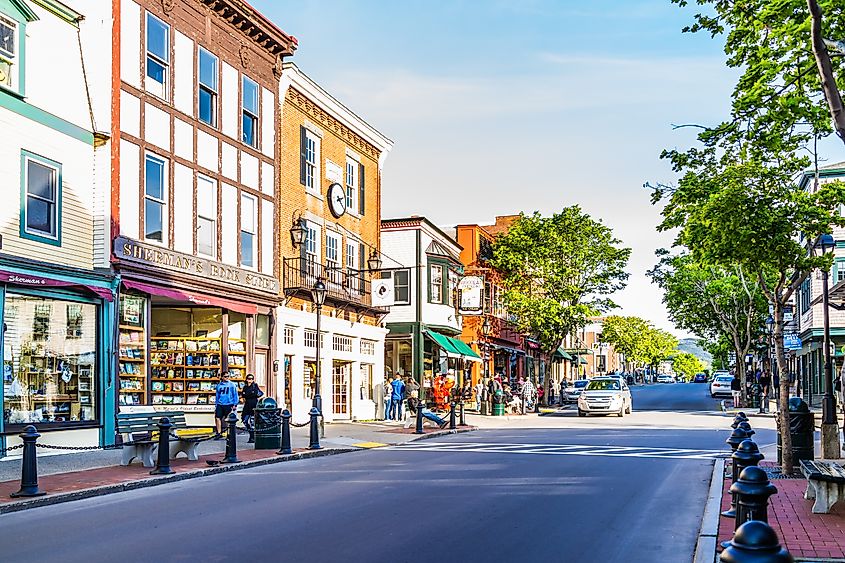
The nationally beloved Mount Desert Island, which hosts Bar Harbor, is a popular destination for those wishing to be transported back into a 1950's American aesthetic. The lively Main Street boasts some iconic businesses, one of which is notorious for selling lobster-meat ice cream (author's note: I am proud to say I tried it, but I will not be going back for seconds). Furthermore, Acadia National Park, just minutes away, offers miles of hiking and biking trails, along with unmatched opportunities to spot wildlife. Do not be too surprised if you see an all-American Bald Eagle pluck a fish right out of the water. One curiosity worth visiting is the Abbe Museum, dedicated to the Wabanaki people's culture and history. For those inclined to take a romantic stroll along the sea, check out Shore Path, a historic walking trail that provides picturesque views of the harbor, Frenchman Bay, and the Porcupine Islands.
Lewes, Delaware

Lewes, founded in 1631, is a lovely little coastal town with a deep history and welcoming atmosphere. Second Street is the town's main thoroughfare, and it is a spectacular example of a beach experience done right; good food and a hot sun are impossible to compete with. The Zwaanendael Museum, named after the first Dutch settlement in Delaware, showcases the area's history through exhibits and artifacts. Cape Henlopen State Park, just outside of Lewes, offers a pristine coastline, nature trails, birdwatching, and a WWII observation tower. Additionally, the Lewes-Rehoboth Canal, perfect for kayaking and paddleboarding, provides a relaxing way to explore the town's waterways.
Each destination here ultimately offers an experience that transports its guests to a different era, revealing the roots and character of these storied communities. Amid the vibrant local art, delicious cuisine, and historic architecture, one begins to develop a connection to the past that's both inspiring and humbling. Incredible people built these towns and their corresponding main streets without industrial or digital tools, leaving a significant mark on the cultural fabric. By visiting these charming locales, guests enjoy the beauty and history they offer while simultaneously paying tribute to the dedicated people who first brought life to these remarkable areas.






